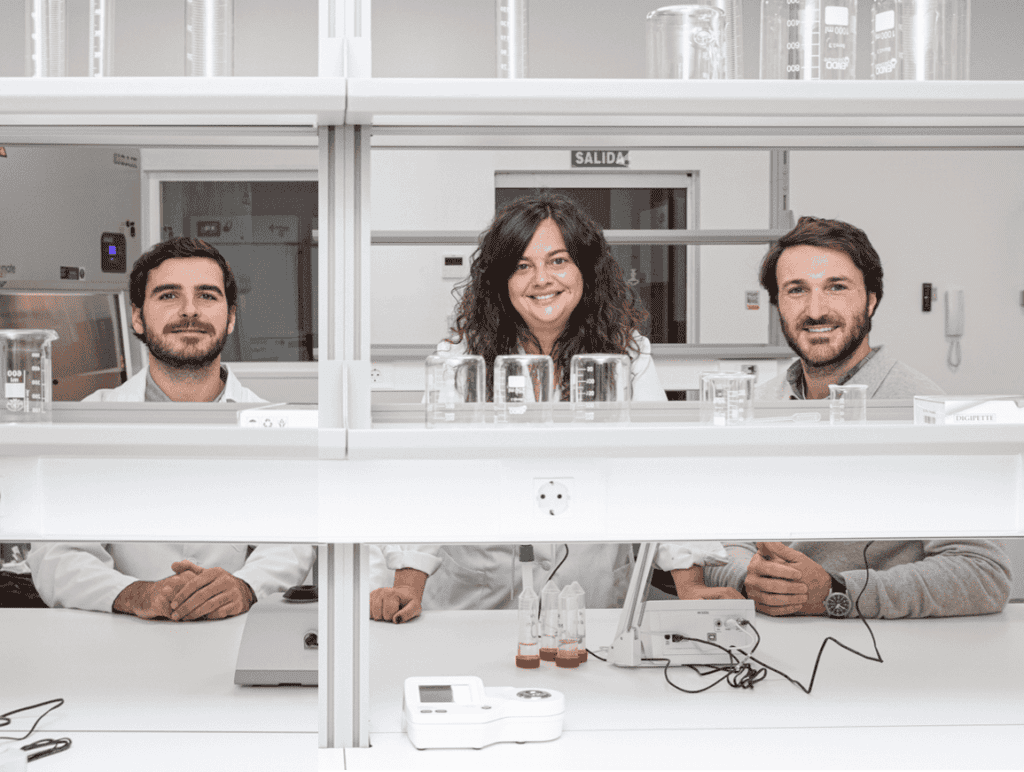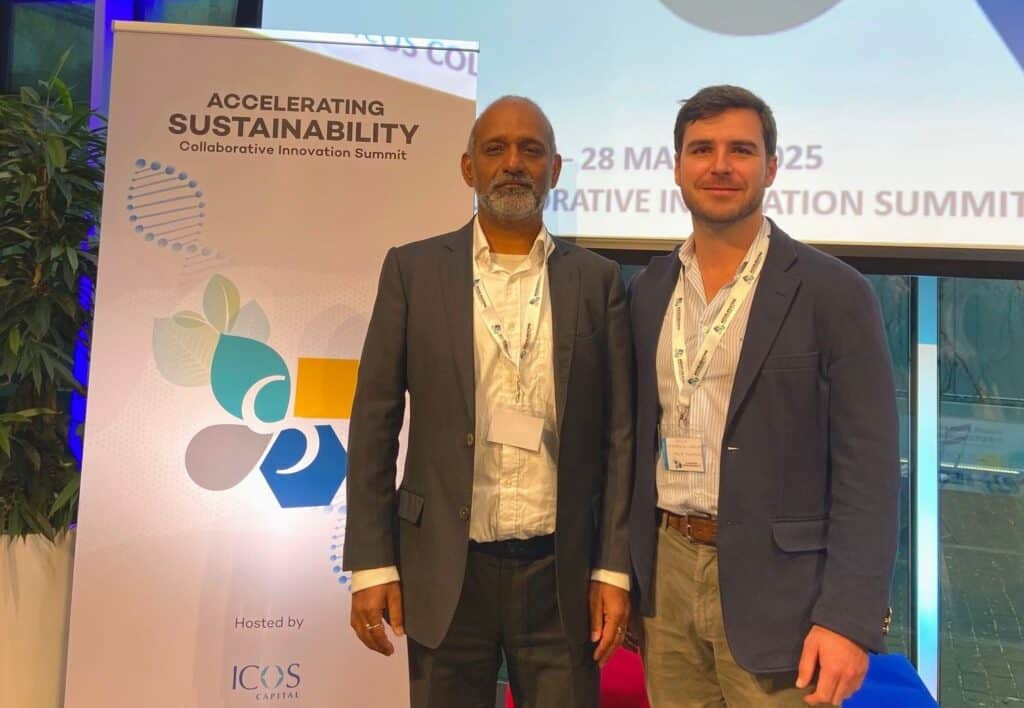MOA Foodtech is a biotechnology company specializing in the use of fermentation and AI to produce healthy, sustainable food ingredients from agricultural byproducts. The company’s focus is on creating next-generation proteins that are both nutritionally rich and technologically versatile, offering a revolutionary solution to food waste while providing sustainable alternatives to traditional protein sources.
Bosco Emparanza García is the CEO and founder of MOA Foodtech. With a background in biochemistry and an MBA in biotechnology, Bosco has extensive experience in the biotechnology, pharmaceutical, and food industries, including a notable role at AINIA Centro Tecnológico.
In this interview, Bosco discusses how AI-driven fermentation is revolutionizing ingredient development, the environmental benefits of upcycling agricultural byproducts, and how MOA Foodtech is shaping the future of sustainable protein production.

How is AI changing the way food companies develop new ingredients, and how does it improve sustainability?
AI is transforming the way we approach fermentation and ingredient development by eliminating the guesswork and compressing timelines that would traditionally stretch over months. Our AI-driven platform Albatros lets us analyse the specific composition of a byproduct and instantly model how different microorganisms will interact with it. This allows us to select the best microbial strain, predict fermentation outcomes, and tailor the process to achieve a specific nutritional or functional result.
From a sustainability standpoint, the benefits are enormous. First, it allows companies to move away from refined sugars and expensive raw materials, and instead make use of feedstocks they already produce as part of their normal operations, their side-streams. These streams often end up as animal feed, burned, or discarded altogether. By upcycling them into high-value protein ingredients, we’re not only reducing waste but actively creating new sources of revenue with a much lower environmental footprint.
2) You’ve mentioned that AI can cut R&D time by up to 80%. How does this work in practice, and what impact does it have on the final product?
Traditionally, developing a new fermentation-based ingredient can take six months or more. You start with a hypothesis, run experiments, adjust parameters, and repeat the process until you land on a viable product. What Albatros allows us to do is compress that entire cycle by making accurate, data-driven predictions before we even step into the lab. This helps us avoid months of trial-and-error by predicting the best microorganisms and fermentation conditions up front. Instead of spending six months on lab trials, we’ve had cases where we developed a new ingredient in just two weeks and at a fraction of the cost.
Speed doesn’t come at the expense of quality, either. In fact, using AI, we are able to fine-tune the nutritional composition, functional properties, and sensory attributes of innovative proteins. The result is a better ingredient, developed faster, and with significantly lower resource use.
Can you talk about how turning agricultural byproducts into proteins helps the environment and the food industry?
The food industry generates huge amounts of byproducts that are often discarded or underused. Upcycling these streams into protein ingredients allows companies to reduce raw material dependency and waste while unlocking new revenue streams. From an environmental perspective, it cuts down on land, water, and resource use associated with conventional protein production.

How does AI-driven fermentation compare to traditional methods in terms of efficiency, costs, and product quality?
Traditional fermentation is effective, but it’s slow, rigid, and costly when working with new inputs. With AI, especially through Albatros, we can predict outcomes before going into the lab. This level of precision reduces R&D time and allows us to tailor the process for higher nutritional value, better functionality, and greater efficiency.
In terms of cost, the difference is significant. In one example, we developed an ingredient using upcycled starches at just 5% of the cost it would have taken through conventional methods, and 75% faster. So, compared to traditional processes, AI-driven fermentation gives us speed, cost savings, and consistent, high-quality outputs. We’ve also found that the quality of the resulting ingredients often matches or exceeds that of products developed using more expensive, traditional methods.
Where do you see alternative proteins, especially those made through fermentation, fitting into the global food system in the next few years?
Fermentation-based proteins are going to be essential. We’re seeing rising global demand for protein, and we can’t meet it through animal agriculture or even plant-based sources alone. Fermentation lets us create high-quality protein without the same land, water, or environmental impact. With AI tools like Albatros, we can do it faster, more sustainably, and at scale.
Can you explain how your AI platform, Albatross, helps you choose the best microorganisms for fermentation and improve yields?
Albatros uses detailed metabolic models and real-world lab data to predict how microorganisms will behave with a specific byproduct. We input the byproduct’s composition and our fermentation goal, like maximising biomass or nutritional value, and the system identifies the best microbe or microbial mix for the job. It can also work the other way around: if we want to use a particular strain, it’ll tell us the best input material. That kind of precision is a game-changer.
Right now, we have a library of around 70 globally common food industry byproducts, and a growing bank of curated, genome-scale metabolic models for different microbial strains. These models are highly detailed. One of them includes over 2,200 biochemical reactions and nearly 2,000 metabolites, allowing us to simulate microbial behaviour in silico before we step into the lab.

How does using food byproducts in your process help reduce waste, and can you share some examples of byproducts you’ve successfully turned into valuable ingredients?
Our approach is centred on revaluing byproducts that are typically underused or discarded, like those from the cereal and sugar industries. These side-streams often have low nutritional or commercial value in their raw form, but through our directed fermentation process, we’re able to convert them into functional, high-quality ingredients.
For example, we’ve worked with starch-rich byproducts like breadcrumbs, transforming them into protein-rich ingredients suitable for food applications with a 70% conversion rate. In another case, we’ve reprocessed materials containing over 90% cellulose, which would usually be destroyed, into ingredients with real industrial potential. It’s a powerful way to reduce waste while creating more sustainable options for the food system.
How will the €14.8 million investment from the European Innovation Council help MOA Foodtech move forward in the next year?
This investment is a real turning point for us. It’s not just capital, it’s validation from one of the most competitive funding programmes in Europe. We were selected from over 1,200 applicants, which speaks volumes about the potential of what we’re building.
In the immediate term, the €2.3 million grant will enable us to continue developing Albatros, expanding its capabilities and catalogue of functional ingredients. But the bigger picture is about scale. The €12.5 million equity commitment, which will come in the second phase, will support our efforts to scale Albatros to an industrial level, positioning us as Europe’s first large-scale producer of ingredients using directed fermentation.
The funding also helps us speed up regulatory processes. Our approach uses microorganisms already recognised as safe by the European Food Safety Authority (EFSA) and the US Food and Drug Administration (FDA). This allows us to bring new ingredients to market much faster than if we were working with GMOs or novel organisms. It puts us in a strong position to work with more food manufacturers who are looking for sustainable, scalable alternatives to traditional ingredients.
What trends do you think will shape the foodtech industry in the next few years, and how can companies use AI and biotechnology to stay ahead?
I think resilience and sustainability will shape the future of foodtech. With so much uncertainty in the world, especially around supply chains and resources, the industry needs to be more efficient and less dependent on external factors. AI, fermentation, and upcycling can make production more stable and adaptable.
There’s also growing demand for non-GMO, sustainable proteins that don’t rely on traditional agriculture. Globally, precision fermentation is gaining momentum. It was valued at $2.8 billion in 2023 and is set to grow rapidly, at a CAGR of 43.2% by 2030. Consumers want meat-free options that are both nutritious and environmentally friendly. AI and biotech give food companies the tools to turn waste into value, work more efficiently, and innovate faster. That combination is key to staying ahead in a fast-changing market.



